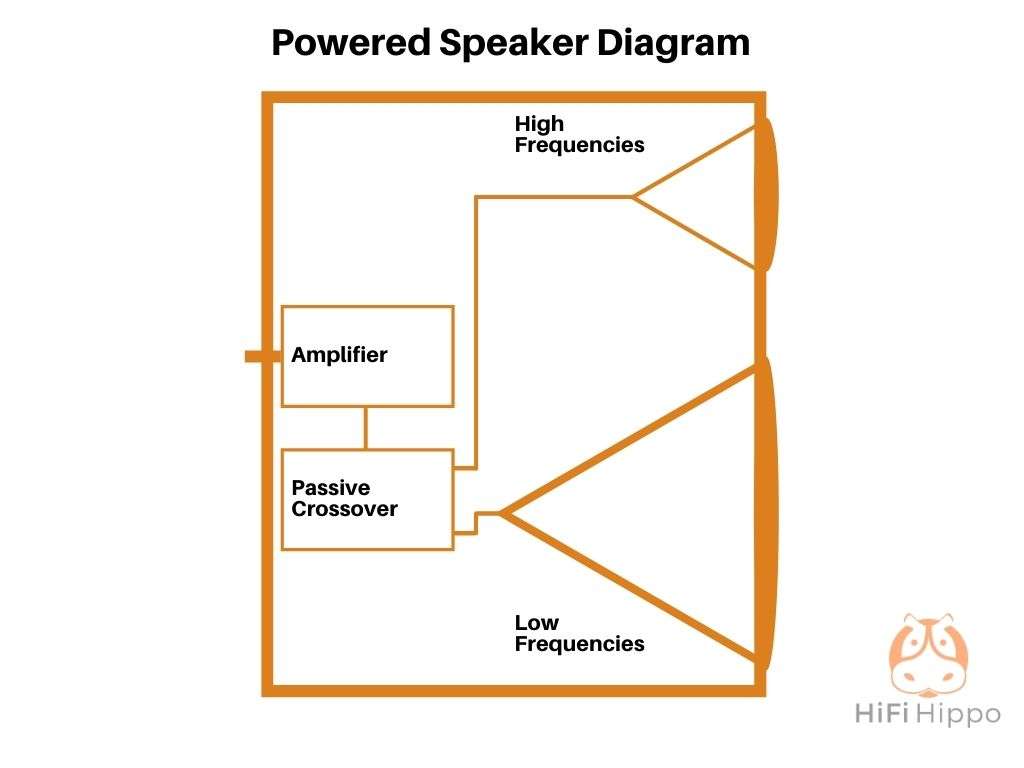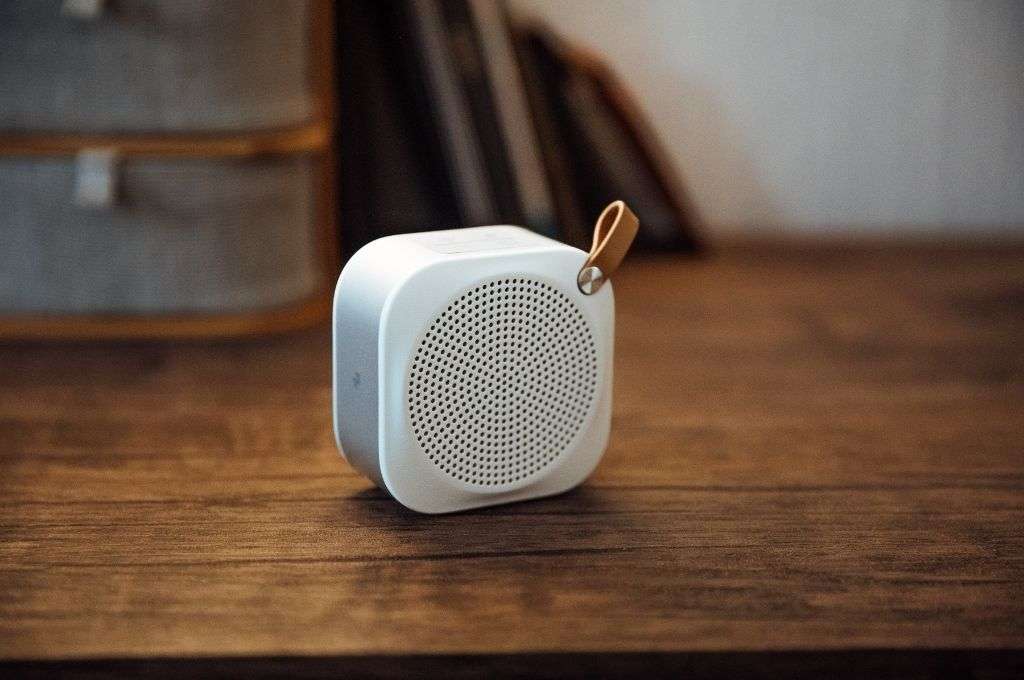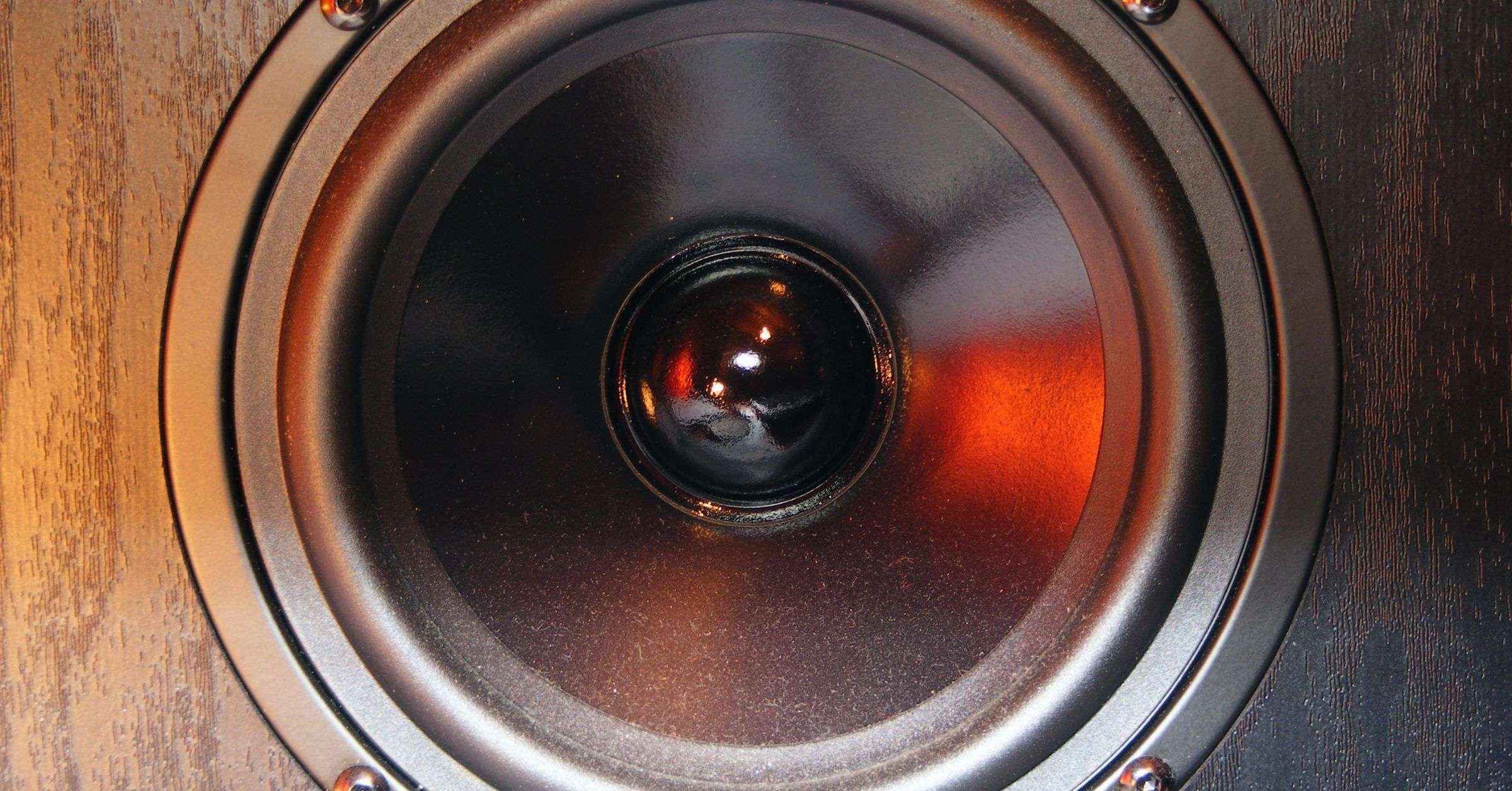What distinguishes powered speakers from unpowered, passive speakers? “Powered speakers” may appear excessive – don’t all speakers require some form of power? This in-depth guide will cover everything you need to know about powered speakers. Let’s dive in!
What’s the difference between a powered and unpowered speaker?
First, let’s explain the differences between powered speaker systems and passive ones.
Power speakers are also sometimes called active speakers. While active speakers are technically different from powered speakers, both speakers have a built-in amplifier, meaning they are self-powered and don’t require an external power amplifier. You can often plug powered speakers directly into an electrical outlet.
On the other hand, unpowered – or passive speakers – do not possess a built-in amplifier, meaning they’ll need the help of an external amplifier to produce sound.
Of course, other factors differentiate active, powered, and passive speakers, such as their crossover network, so if you’re interested in learning more about that, you can check out the article we wrote about active vs. passive speakers.
Powered speaker crossovers explained

Firstly, let’s briefly explain what a speaker crossover does.
A crossover is a filter built within a speaker that sends different frequency ranges to their corresponding speaker drivers. Low frequencies are sent to larger speaker cones called woofers; high frequencies are sent to smaller cones called tweeters.
The crossover network is where active and powered speakers are different. Power speakers use a passive crossover for each driver that is directly connected to a single amplifier. In contrast, an active speaker uses a separate amplifier for each driver (speaker cone) and then sends the audio signal through an active crossover.
This may seem like a minor distinction, but having multiple amplifiers – one for each speaker driver – can make a huge difference in sound quality, especially bass tones. That’s why typically, an active speaker is superior to a powered speaker, though they come at a higher price point.
Benefits of powered speakers
The main benefit of powered speakers is producing sound without the need for an external power amplifier. If you prefer to have a smaller music or vinyl setup, powered speakers eliminate the need to plug into a bulky stereo amplifier – not to mention you can save money by not having to purchase one!
Not needing an external amplifier also saves time researching speaker and external amplifier matching. The amplifier within powered speakers is engineered to get the most pleasing sound from that particular pair of speakers. Because you may combine any passive speakers with just about any power amplifier, there is no assurance of ideal results, and you may wind up with a poorer sounding configuration.
Disadvantages of powered speakers
While power speakers might sound great on paper, there are some potential drawbacks to consider before purchasing, depending on your audio needs; these may or may not be necessary depending on your audio needs.
Firstly, if you have an existing stereo, you’ll want to be very careful about purchasing the right power speakers. While some power speakers can work well with a stereo amplifier, others do not and can cause damage to your stereo or speakers. We recommend purchasing passive speakers if you already use a higher-quality stereo system.
Additionally, powered speakers tend to be heavier and bulkier due to the additional built-in components. Because of this, they also tend to be more complex and more costly to repair. Instead of replacing a single speaker, the whole system needs to be taken apart and reconfigured.
How do I know if my speakers are powered?
It’s pretty easy to tell if your speakers are powered. If your speakers have a power cord, odds are they’re powered. Almost all powered speakers need to be plugged into a power source.
Examples of powered speakers

Powered speakers are all around us, you just might not know it. Given the explanation above, really any speaker with a power cable is an active or powered speaker. Here are a few examples of other powered speakers:
- Wireless speakers
- Computer speakers
- PA speakers
- Bookshelf sized speakers
- Monitor speakers
Do powered speakers need a power amplifier?
Powered speakers do not need a separate power amplifier. They already possess a built-in amplifier.
You can plug powered speakers directly into many devices such as a phone, laptop, or turntable. This makes them highly versatile and convenient speakers for people who don’t want multiple pieces of equipment.
Can I use powered speakers with a turntable?
So you have a turntable and a set of power speakers – can you connect powered speakers directly to them and get decent sound quality? The answer is: it depends.
In order to use powered speakers with a turntable, the turntable needs a built-in phono preamp, or you must buy a stand-alone phono preamp. If you have at least one of those two things, great, you can use powered speakers directly with your turntable without any additional equipment!
Are powered speakers the right choice for you?
Powered speakers are an excellent choice for people looking for a simplistic yet high-quality setup. They offer many benefits over passive and powered speakers regarding budget, flexibility, and quality.
The information in this guide should help you determine if a set of powered speakers fits your needs and budget. For vinyl enthusiasts, using powered speakers for turntables have some great perks!
Ultimately, it comes down to your audio and music wants and needs. We hope you found this guide helpful – thanks for reading!

Lead Editor / Owner
After beginning his career in the video and audio recording industry, Andrew started HiFi Hippo to share his knowledge and passion for vinyl and vintage audio with other readers.
